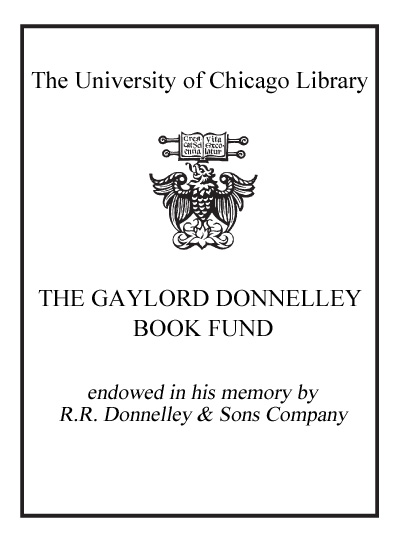Review by Booklist Review
At the center of disco culture stood the mother disco, Studio 54, which Haden-Guest eulogizes in fittingly breathless style, re-creating the sleaze, grit, and shallowness of the era that taught America to dance with a headful of pharmaceuticals in what must be regarded as a valuable sourcebook. The glitterati pop up in it like round-bottomed toys--Steve Rubell and Ian Schrager (54's proprietors), Liz Smith (its newspaper chronicler), and the mono-named royalty of the '70s--Liza, Mick, Bianca, Halston, etc. Indeed, anybody who made a significant splash at Studio 54 (or had a body cavity filled with anything significant there) turns up in the book, and a "Cast List" appears as a documentary appendix. Haden-Guest breezily flits from tableau to tableau, which, considering the pop-cultural ground he sets out to cover, is necessary. Yet the tone is one of bleakness, waste, and loss. Is anything else more appropriate to the story of the disco era? --Mike Tribby
From Booklist, Copyright (c) American Library Association. Used with permission.
Review by Publisher's Weekly Review
Studio 54 was the quintessential midtown Manhattan nightspot of the 1970s and early '80s, where the gay and straight worlds intersected; where celebs and wannabes crowded in to disco, drug and who knows what else; in front of which people waited for hours in hopes of being admitted (two women arrived naked on horseback as Lady Godivas; the horses were let in, but the women weren't). Haden-Guest, a regular writer for New York magazine and Vanity Fair, reports on his beloved "Nightworld"the life of New York clubswith an enthusiasm that assumes we all were swept away by disco-mania. The most compelling part of this chronicle concerns the rise and fall of Steve Rubell, the boy from Queens, and the club he created that drew the rich and famous from all over the globe. Rubell and his partner, Ian Schrager, were eventually sentenced to three years in jail for tax evasion. Haden-Guest, who's prone to exaggeration, calls their trial the media culture's version of "Moscow's Show Trials of the Stalin era." Some readers will find the gossip, name-dropping and dirt-dishing delicious; others will wonder what all the fuss is about. This will be of most interest, darling, to followers of Liz, Liza, Bianca and Roy Frowick, aka Halston. Photos not seen by PW. (Apr.) (c) Copyright PWxyz, LLC. All rights reserved
(c) Copyright PWxyz, LLC. All rights reserved
Review by Library Journal Review
Haden-Guest, whose nightlife reports have appeared in New York magazine and Vanity Fair, here tells of the heyday of Manhattan's gaudy Studio 54, in a time when disco ruled and polyesters clashed. (c) Copyright 2010. Library Journals LLC, a wholly owned subsidiary of Media Source, Inc. No redistribution permitted.
(c) Copyright Library Journals LLC, a wholly owned subsidiary of Media Source, Inc. No redistribution permitted.
Review by Kirkus Book Review
Gossip-laced and rumor-spiked, an intelligently written history of 20-plus years of New York nightclubbing. Haden-Guest, a veteran denizen of what he calls the ``Nightworld,'' on which he has reported for New York magazine, the New Yorker, and Vanity Fair, offers an anecdotal, thoroughly decadent chronicle of Clubland to complement his insider's catalog of the art market, True Colors (1996). Haden-Guest has not only firsthand experience of the exclusive Studio 54 and lesser clubs, but moreover ready access to a multitude of players (and has-beens), such as Studio 54 co-owners Steve Rubell and Ian Schrager, ur-party-promoter Carmen D'Alessio, Club Kid (and murder suspect) Michael Alig, punk-pop singer Billy Idol, and innumerable others whose names he drops with Winchell-esque facility. Their reminiscences and rumor-mongering inject The Last Party with a nostalgic vividness and immediacy in lieu of any special insight into the confluence of celebrities, disco, and drugs at Studio 54. Haden-Guest does, however, cogently unravel the frenetically complicated network of disco-ing uptowners and punked-out downtowners, various social cliques that composed the Nightworld, repeatedly returning to the adventures of the odd couple of Rubell and Schrager. How the extroverted, gay Rubell and introverted, straight Schrager stole ideas, wrangled funds, tapped the zeitgeist, and made Studio 54 a phenomenon before running afoul of the feds and IRS makes for compulsive reading. Added to this are the equally compelling stories of the Studio's imitators (e.g., Xenon, with its Close Encounters disco ceiling), its post-Rubell owners and party hosts (notably Yippie-tuned-yuppie Jerry Rubin), and its more sordid successors and habitués, such as the feral Club Kids at Danceteria. Walpurgis Nightlife from the Age of Coke and Quaaludes to the Era of Ecstasy. (50 b&w photos, not seen) (Author tour)
Copyright (c) Kirkus Reviews, used with permission.
Review by Booklist Review
Review by Publisher's Weekly Review
Review by Library Journal Review
Review by Kirkus Book Review

